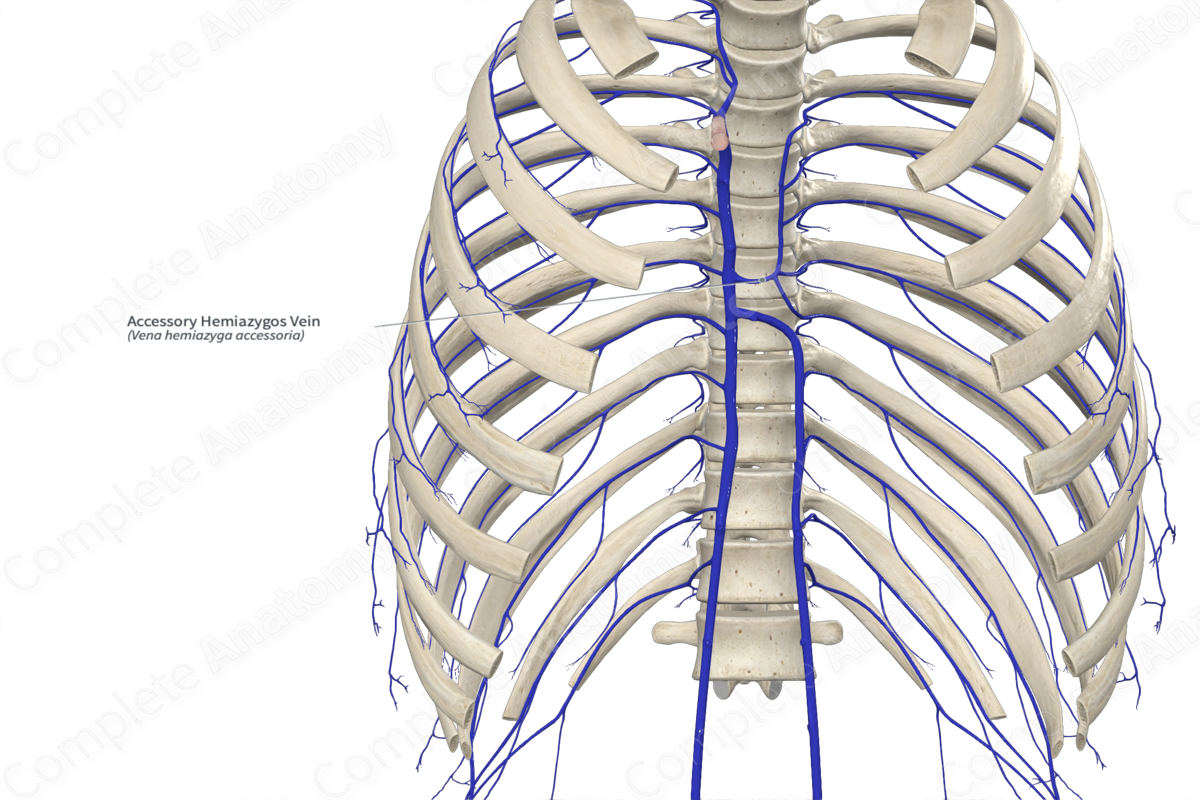
Quick Facts
Origin: Union of fourth to eighth posterior intercostal veins.
Course: Descends in the posterior mediastinum and joins the azygos vein at the level of the seventh thoracic vertebra.
Tributaries: Fourth to eighth left posterior intercostal veins, esophageal and left bronchial veins.
Drainage: Thoracic walls and tracheobronchial tree.
Origin
The accessory hemiazygos vein is an unpaired vein that represents the left-sided equivalent of the superior portion of the azygos vein. It is formed by the union of the fourth to eighth left posterior intercostal veins.
Course
The accessory hemiazygos vein descends in the posterior mediastinum, sitting on the left side of the fourth to seventh thoracic vertebral bodies. At the level of the seventh thoracic vertebra, the accessory hemiazygos vein crosses posterior to the descending thoracic aorta and esophagus, and either anterior or posterior to the thoracic duct to join the azygos vein on the right side. The accessory hemiazygos vein may also join the hemiazygos vein.
The origin, course, tributaries and termination of the azygos system is highly variable. Sometimes, the left side (the hemiazygos and accessory hemiazygos veins) is absent or underdeveloped, meaning that the azygos vein is responsible for drainage of the left posterior intercostal veins. If the accessory hemiazygos drains into the left brachiocephalic vein, the azygos vein assumes a median position in the posterior mediastinum.
Tributaries
The major tributaries of the accessory hemiazygos vein include the fourth to eighth left posterior intercostal veins, esophageal and left bronchial veins.
Structures Drained
Numerous structures are drained indirectly by the hemiazygos vein via its tributaries, including the thoracic wall, esophagus, bronchi, and trachea.
Learn more about this topic from other Elsevier products
Hemiazygos Vein

The hemiazygos vein usually originates from a common trunk, formed by the union of the left ascending lumbar vein with a right subcostal vein.




